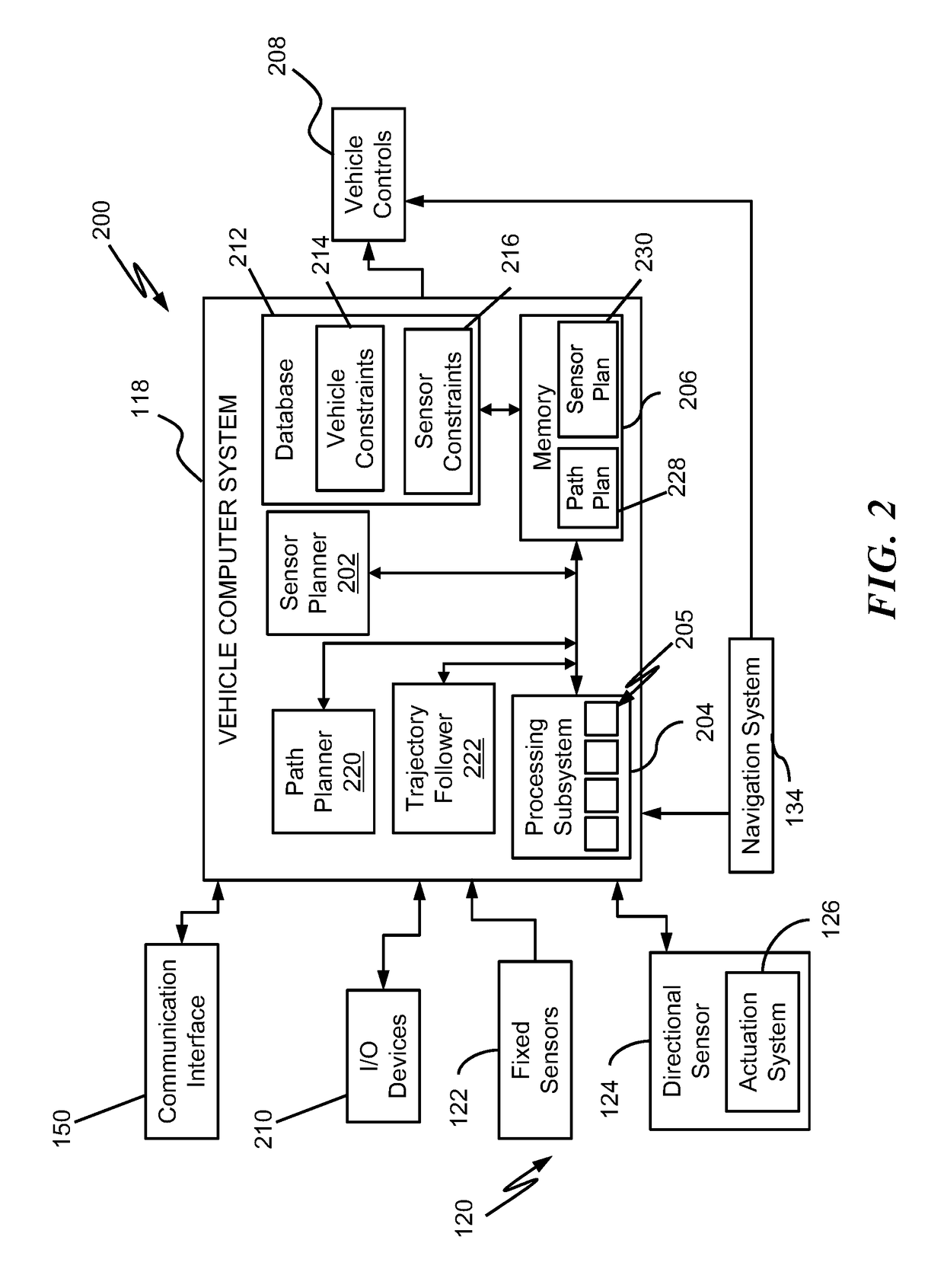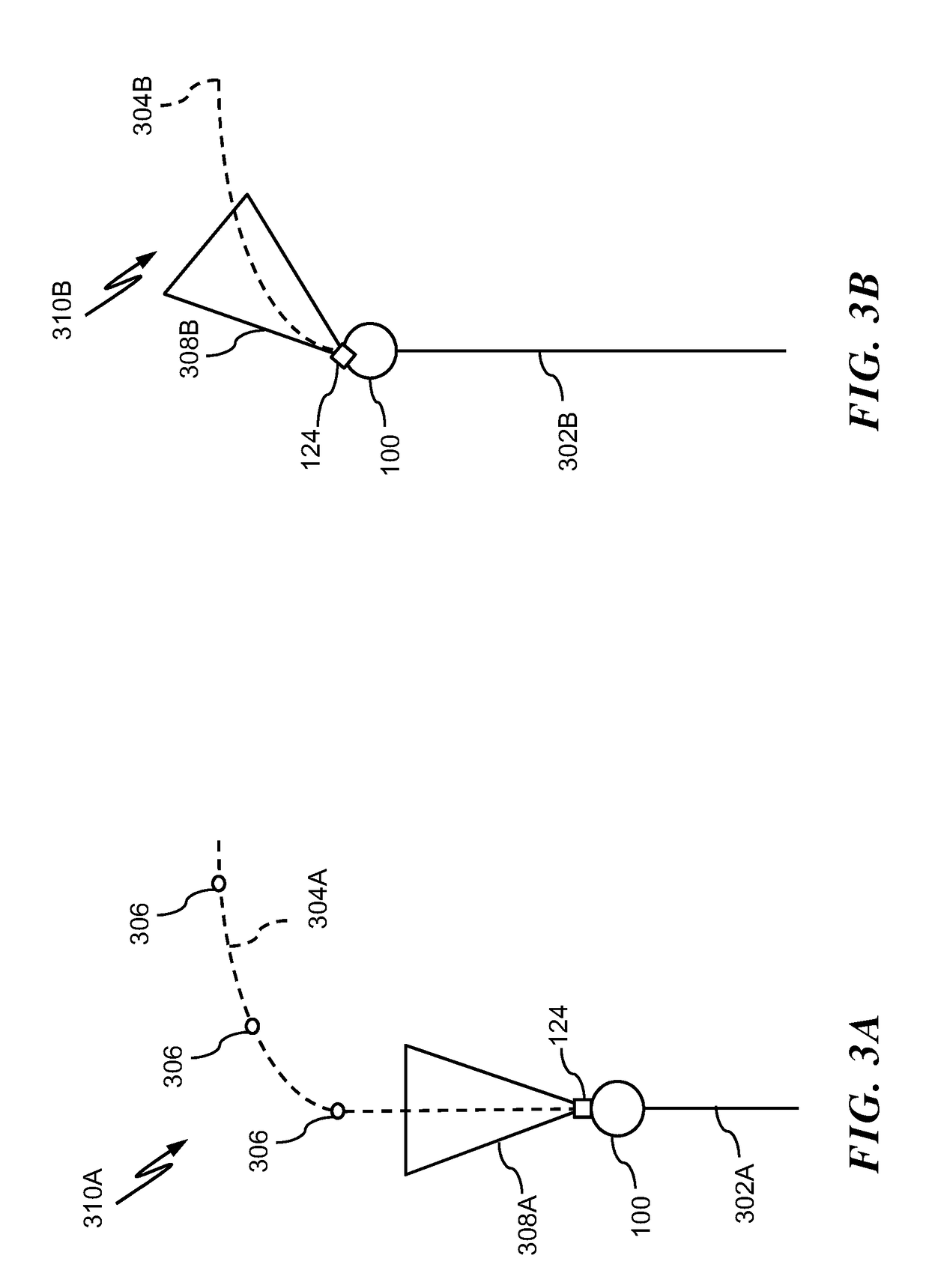Trajectory-based sensor planning
a technology of trajectory-based sensors and planning, applied in the direction of process and machine control, using reradiation, instruments, etc., can solve the problems of limiting the ability to navigate the vehicle autonomously, inability to view laterally, poor peripheral perception,
- Summary
- Abstract
- Description
- Claims
- Application Information
AI Technical Summary
Problems solved by technology
Method used
Image
Examples
Embodiment Construction
[0017]In exemplary embodiments, trajectory-based sensor planning on a vehicle is provided to dynamically adjust a current field of view of one or more directional sensors based on an expected path of the vehicle. A directional sensor is sensor that has a field of view, such as a camera, as opposed to a non-directional sensor, such as a temperature sensor, a pressure sensor, and the like. Trajectory-based sensor planning may be implemented in whole or in part within autonomous aircraft, such as optionally-piloted vehicles (OPVs) and unmanned aerial vehicles (UAVs), and / or may be provided to assist a human-piloted aircraft. Furthermore, trajectory-based sensor planning can be implemented in any type of vehicle, including an aircraft, watercraft, spacecraft, or land vehicle. In exemplary embodiments, a current field of view of one or more directional sensors is adjusted according to a planned trajectory of the vehicle such that the current field of view of the one or more directional s...
PUM
 Login to view more
Login to view more Abstract
Description
Claims
Application Information
 Login to view more
Login to view more - R&D Engineer
- R&D Manager
- IP Professional
- Industry Leading Data Capabilities
- Powerful AI technology
- Patent DNA Extraction
Browse by: Latest US Patents, China's latest patents, Technical Efficacy Thesaurus, Application Domain, Technology Topic.
© 2024 PatSnap. All rights reserved.Legal|Privacy policy|Modern Slavery Act Transparency Statement|Sitemap



